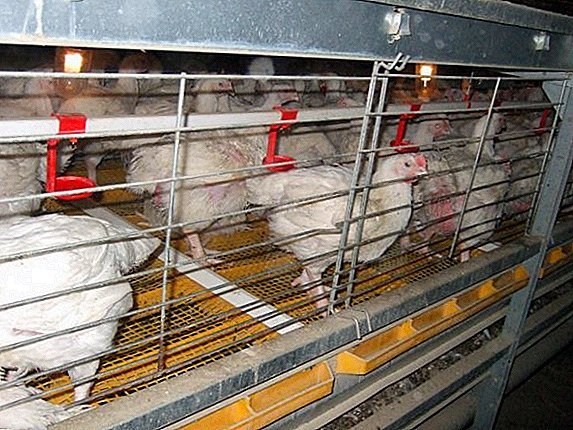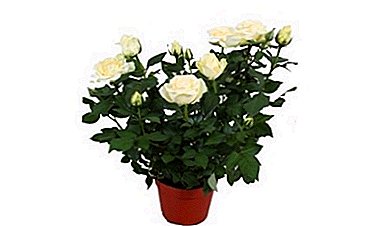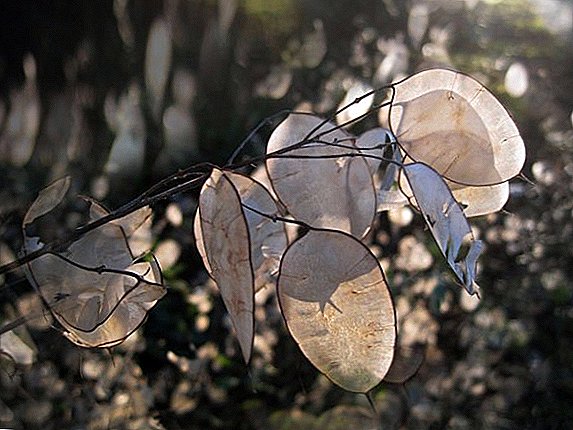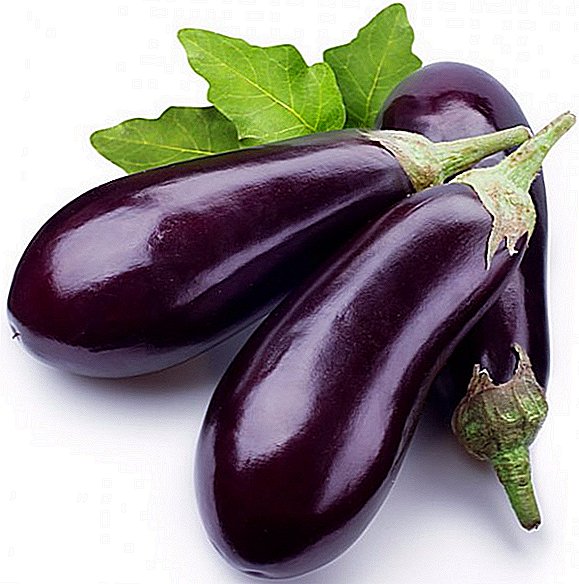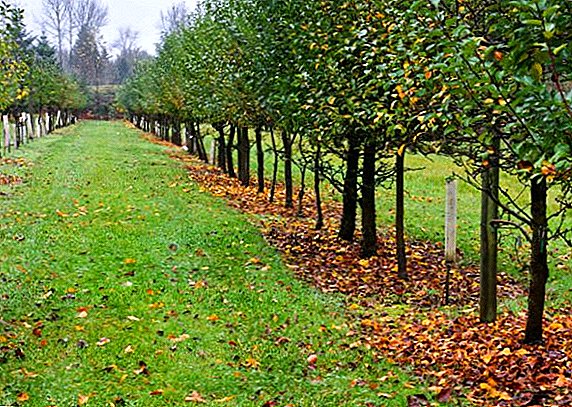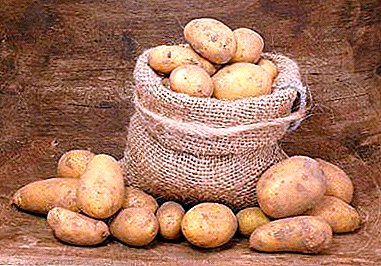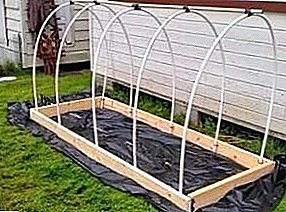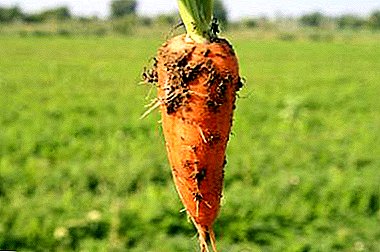
Red Cor belongs to the most common varieties of carrots. Its popularity among gardeners is due to productivity, unpretentiousness and resistance to adverse factors. But good yields are achieved only with proper care.
Also an important factor in the successful development of the plant is the soil in which it is planted, the measures for the prevention of diseases and pests, as well as compliance with the terms of planting and harvesting. This article describes in detail the technology of growing carrots Red Cor.
Characteristics and description of the variety
Get an idea of the grade will help a detailed description.
What does it look like?

- The carrot has a conical shape, grows to 11-17 cm. The upper part of the root is flat, the end is pointed.
- The color is bright orange.
- The core is small in size, does not differ in color from the main pulp.
- Carrot juicy, sweet, does not leave a bitter aftertaste.
- The leaves are long, dark green color.
- Rosette sprawling shape.
What sort is it?
Red Cor is a representative of the Shantane variety. It has common genetic traits with this carrot.
Amount of fructose and beta carotene
100 g of root contains 10 g of fructose. As well as 27 mg of beta-carotene.
Sowing time
When growing this variety, you can follow the early, medium or late dates of sowing. Carrots are planted from early April to mid-June. In spring, they start sowing when the air temperature reaches 15 ° C and the ground warms up to 8 ° C.
Seed germination
Germination of planting material reaches 45-70%. Such number of sprouts is formed from all seeds.
The average weight of 1 root
The average weight of the root - 100-140 g
What is the yield of 1 ha?
High yields. From 1 ha receive 40-45 tons of root crops.
Appointment and keeping quality
Red Kour is suitable for culinary processing and fresh consumption. It is used in the medical industry for the preparation of medicines and in the agricultural sector as animal feed. Stability reaches 6-8 months.
Regions for the cultivation of vegetables
This carrots are grown in all regions. Red Cor grows well in the northern, southern and central regions.
Where is it recommended to grow?
The grade is suitable for an open ground and cultivation in greenhouses.
Resistance to diseases and pests
This carrot shows resistance to wet rot and stalking. Resistance to pests is not marked.
Ripening
Red Cor belongs to mid-season varieties. The ripening period takes from 90 to 120 days.
What kind of soil does it prefer?
 Carrots require loamy, sandy, black earth or sandy loam soil. Vegetables are not planted in heavy soil.
Carrots require loamy, sandy, black earth or sandy loam soil. Vegetables are not planted in heavy soil.
This leads to the fact that the fruits of carrots begin to deform and their growth slows down. To heavy clay soil was suitable for planting, it is necessary to make a 1 square. m 30 kg of sand.
Then dig the ground 20 cm deep. Plant carrots in slightly acidic (pH 5.0-5.5) or neutral soil (pH 6-7).
Frost resistance and transportability
Red Core tolerates frosts up to -4-5˚С. With a lower temperature drop, the roots get a pale color.
Variety resistant to transportation. Vegetables do not crack during long transportation.
Manufacturability for farms and peasant farms
Workability variety is rated as high. Carrots do not require additional care. Good yields and long-term storage allow Red Kor to be used for feeding farm animals.
Breeding history
Red Kor is derived from wild violet carrots from Afghanistan. Its authors are Dutch breeders.
What is the difference from other types of carrots?
Red Cor differs from other varieties:
- ability to adapt to any climatic zones;
- high fructose content;
- resistance to nitrates;
- flat conical shape;
- a small number of lateral processes.
Carrots are characterized by versatility.
Advantages and disadvantages
 The positive properties of the variety are:
The positive properties of the variety are:
- high levels of fructose;
- good yield;
- long storage;
- resistance to transportation;
- frost resistance;
- unpretentiousness to growing conditions;
- resistance to cracking;
- universal application;
- ability to resist certain diseases.
There are varieties and disadvantages. For storage of root crops need to create special conditions. If you harvest after the required time, the taste of carrots will decrease.
Growing up
Podzimny sowing recommended in northern areas. In other regions, Red Cor can be planted both in spring and in autumn. To determine whether the soil is suitable for planting, pay attention to the plants on the site. Sorrel, horsetail, plantain, buttercup and pansies develop on acidic soils. This site is not suitable for carrots. The presence on the garden nettle, clover, mother-stepmother indicates a weak or neutral level of acidity.
Sour soil can be made suitable for culture. In loamy and clay soils contribute 5-10 kg of lime per 1 sq. Km. m. Fertilizer will operate from 12 to 15 years. In the sand and sandy add 1-1.5 kg per 1 square. m. The next time the soil is lime in 2 years. Fertilizer is applied as a quench. For this, lime is poured over with water at the rate of 40 liters per 100 kg.
For carrots pick a well-lit garden bed.. Growing in shaded areas will reduce yields. Tomatoes, lettuce, onions, potatoes, cucumbers, cabbage can be predecessors of the culture. Root crop is not planted after sorrel, celery, parsnip, parsley.
- Before sowing, 10 g of potassium, 2 kg of rotted mullein and 25 g of superphosphate per 1 sq. m
- 5 days before planting, seeds are poured with warm water. For landing use only those that remained at the bottom.
- Then the seeds are laid out on wet gauze and left for 4-5 days at a temperature of 20-24 ° C. When the small roots sprout, you can start sowing.
- Seeds are placed in furrows 2 cm deep at a distance of 3-5 cm. 20 cm are left between the rows.
 When the seedlings grow to 5 cm, the carrot is thinned for the first time.. Plants should be 3-4 cm apart. The second thinning is carried out after 3 weeks, leaving a space of 10 cm.
When the seedlings grow to 5 cm, the carrot is thinned for the first time.. Plants should be 3-4 cm apart. The second thinning is carried out after 3 weeks, leaving a space of 10 cm.
The first time carrots are fed with a mixture of 1 tbsp. l potassium sulfate, 1.5 Art. l double superphosphate, 1 tsp. urea and 10 liters of water. This should be done 20 days after germination. After 2 weeks the vegetable is fertilized again. In a bucket of water diluted in 1 tbsp. l azofoski and potassium sulfate. On 1 square. m requires 5 liters of nutrient mixture.
In the spring, the vegetable is watered 2-3 times a week, in June - once every 5 days, in July - once a week. Water consumption per 1 square. m - 10-15 liters. 3 20 days before harvesting, watering is stopped. In rainy weather, the procedure is not carried out. After watering, the soil between the rows is loosened to prevent the appearance of a crust. As weeds grow, weeding is carried out.
Harvesting and Storage
- Carrots from the ground taken out by hand or with a shovel.
- Cut the tops.
- Root crops are put in plastic or wooden boxes filled with wet sand. And also in plastic bags with air vents.
Carrots are stored at 0- + 3˚C and humidity of 90%.
Diseases and pests
Carrots may be subject to the following diseases.:
- fomoz;
- chalcosporosis;
- bacteriosis;
- white rot;
- brown spot;
- alternariozu;
- urine dew.
 As well as the effects of pests:
As well as the effects of pests:
- scoops;
- carrot aphid;
- wireworm;
- slugs;
- leaflet;
- carrot fly;
- umbrella moth.
Disturbed crop rotation and poor soil preparation lead to the development of diseases and the appearance of pests.
Various problems and solutions
Thick sowing leads to the formation of thin fruits. Thinning will help to avoid this. In the absence of timely watering the pulp becomes dry. And excessive moisture becomes a cause of softening of the fruit and reduce their keeping quality. It is necessary to adhere to the schedule and norms of watering.
If part of the root is above the ground, it becomes bitter. To preserve the taste of the vegetable, it must be sprinkled with earth.
Similar types of carrot
Red Core has common characteristics with the following types of carrot:
- Dunvers, which has similar taste properties and the shape of the fruit.
- Flakke-karotinnaya - has a high content of beta-carotene and conical fruit.
- Berlicum - similar to Red Kore sweet taste, diameter of root crops, which reaches 5 cm, long storage and high levels of carotene.
These varieties combine taste, fruit shape and beta-carotene. Red Cor is distinguished by versatility. This type of carrot gives high yields in different climatic zones. It adapts well to weather conditions in the northern, central and southern regions.


